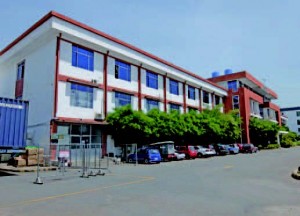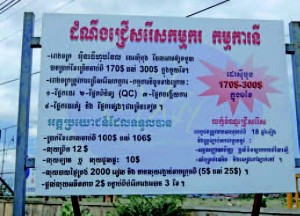Project Leader:YAGURA, Kenjiro (Hannan University, Faculty of Economics)
Collaborators: KOBAYASHI, Satoru (Kyoto University, Center for Southeast Asian Studies)
Keola, Souknilanh (Institute of Developing Economies)
MIZUNO, Atsuko (Kyushu University, Faculty of Economics)
HATSUKANO, Naomi (Institute of Developing Economies, Bangkok Office)
TAKEGUCHI, Miku (Kyoto University, Graduate School of Asian and African Area Studies)
Term:2013-2014
Outline of Research:
The aim of this research is to examine the interrelation between labor migration to Thailand from its neighboring countries (Cambodia, Laos, and Myanmar: CLM) and industrial development in these countries. By doing so, this research will enable predictions on how industries and labor markets in Continental Southeast Asia will be affected by the smoother cross-border movement of people, goods and capital in this region promoted through ASEAN economic integration as well as the Greater Mekong Subregion development initiative. Specifically, it focuses on the garment industry and examines how the employment of CLM workers by Thai garment factories impacts upon the garment industry in the region through field surveys of garment factories and workers.
Description:
Increasing labor migration from CLM to Thailand can have various impacts on industries in these countries. The return of CLM’s migrant workers to their own countries can help industrial development in CLM if they have enhanced their knowledge and skills while working in Thailand. On the other hand, the further increase in labor migration from CLM to Thailand might also cause a “labor shortage” in CLM and thus discourage industrial development in them. Deepened dependence on CLM workers by some Thai industries might hinder adoption of upgraded technologies and advancement into high-value added activities.
This research aims at revealing the above-mentioned interrelation between labor migration from CLM to Thailand and industrial development in those countries with a view to predict the effects of ASEAN economic integration and the development initiatives of the GMS on the economy of these countries. The garment industry is a suitable study case because (1) it is a major industry to all of these countries, (2)Thai’s garment industry has deepened its dependence on CLM workers, and (3) some Thai garment firms have started to set up factories in CLM.
The significance of this research is that, apart from providing us with materials to predict the impacts of the economic integration and the GMS’s development initiatives, it will give us clues as to how CLM and Thailand should address the labor migration in the region.


